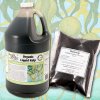Randomblame
Well-Known Member
I agree, brother! All fertilizer especially made for C. should have at least half the nitrogene added in form of calcium nitrate. The whole calmag line is just to make more profit. But its neither a nutrient nor an LED issue. It's because of the VPD! Keep your VPD in a healthy range and there is almost no difference to HPS.Calmag is the most overused additive there is. Calmag issues go away if your nutrient uses calcium nitrate for the nitrogen source. Its more expensive than the other sources but it's much better. Provides both nitrogen and calcium. Nutrients that don't use it for their main nitrogen source typically also have their own brand of calmag. That's so they can make you pay again for something that should already be in their base nutrients. It's not LED related it's nutrient related.
With HPS the humidity is most of the time in a healthy range and lots of growers have never seen VPD issues. They have never seen such issues and many don't even know what it is, me included, lol!
Fact is, the plants can adjust themself within a certain range because of the radiated heat.
With "cold" LED light we need a higher ambient temp to get the leaf temps in the optimal range and a higher humidity is neccessary but usually air tends to dry out with higher ambient temps which makes it neccessary to regulate the humidity manually. As soon as you maintain a healthy humidity range the plants "feel" happy. There are a few good video's on youtube about VPD. I like this one cuz it's detailed and fast explained..





 lol)
lol)





